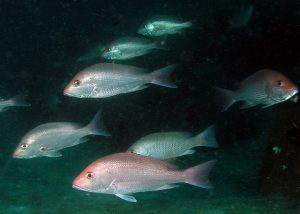
New red snapper proposals need safeguards from overfishing
Lawmakers in the House and Senate recently introduced legislation aimed at the perpetually contentious Gulf of Mexico red snapper fishery. Thanks to stronger conservation standards and accountability, red snapper numbers in the Gulf have tripled in the last decade and catch limits have doubled, leading to increased value for commercial fishermen and access for charter and for-hire vessels. Unfortunately, private anglers are stuck under a profoundly broken management system. Congressman Garret Graves, Senator Bill Cassidy and others on Capitol Hill propose to give the Gulf states the chance to manage this specific part of the red snapper fishery.
We share the desire to give private anglers more flexibility and certainty in their fishing opportunities, and states are already innovating under current law, such as the LA Creel program in Louisiana. The new bills (H.R. 3588 and S. 1686) have improved significantly from similar attempts last Congress. But without further safeguards, they threaten to take us back to the failures of the past, when the fishery was severely depleted and red snapper was hard to find for seafood consumers and anglers alike.
The current proposals would give the five Gulf States authority to manage the private angler portion of the red snapper fishery in both state and federal waters; commercial and charter/for-hire fishermen would remain under federal management. But because the bills lack provisions to ensure that the private angler sector stays within its quota (after exceeding it nine of the last 12 years), the bills would jeopardize the sustainability of the fishery and undermine the commercial and charter sectors.
Current law requires federal fishery managers to keep every sector – commercial, charter and private angler – within an annual catch limit. If one group exceeds its quota, managers must make adjustments to make up for the overage and prevent it happening in the future to ensure long-term sustainability.
Under these bills, however, the five Gulf States would have exclusive power to set the season length for private anglers. It would be up to them to honor the science-based catch limits established for private anglers and make it optional to reduce season lengths if overages occurred. Even under the current, tighter standards, overages are common. In 2016, for example, the sector exceeded its catch limit by 1.14 million pounds, some 28 percent. Without a mandatory backstop in the law affecting private anglers, federal authorities would have to sharply reduce commercial and charter/for-hire quotas to make up for any private angler overages.
The bills do give the Secretary of Commerce a so-called “nuclear option” to take over red snapper fishing in state and federal waters if a state undermines the overall rebuilding plan. But because interfering with a state’s newly legislated rights to manage red snapper – especially in its own waters — is such a drastic step, we agree with others who “doubt the aforementioned federal tool would be imposed.” That would leave the hard-won rebuilding of the Gulf red snapper population in short-term jeopardy. NMFS estimates that private anglers will land more than 11 million pounds of red snapper — triple their quota — under this year’s extended season that was granted by the Commerce Secretary.
The bills’ supporters have asserted that they want any new legislation to keep private angler fishing within the established quotas, and it is undoubtedly possible to amend these bills to make that intention clear in the text. This relatively simple fix would prevent the hard-won gains in this fishery from being quickly erased and ensure that red snapper can be enjoyed by all Americans.












